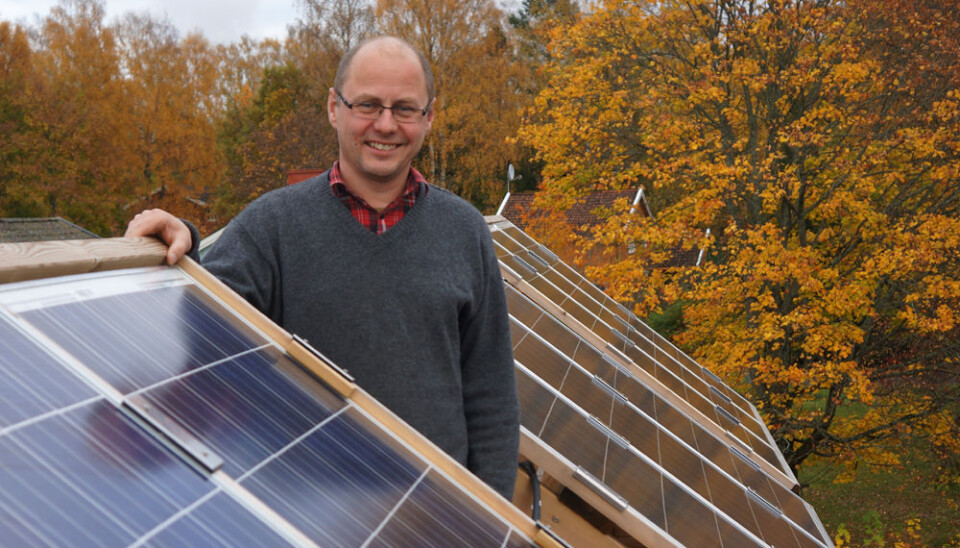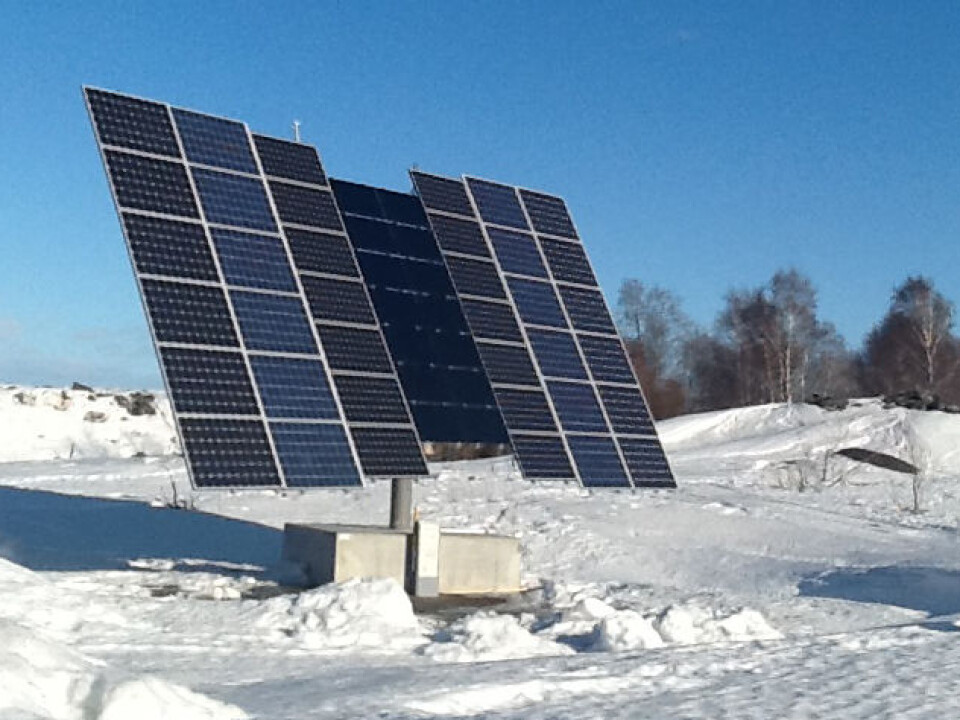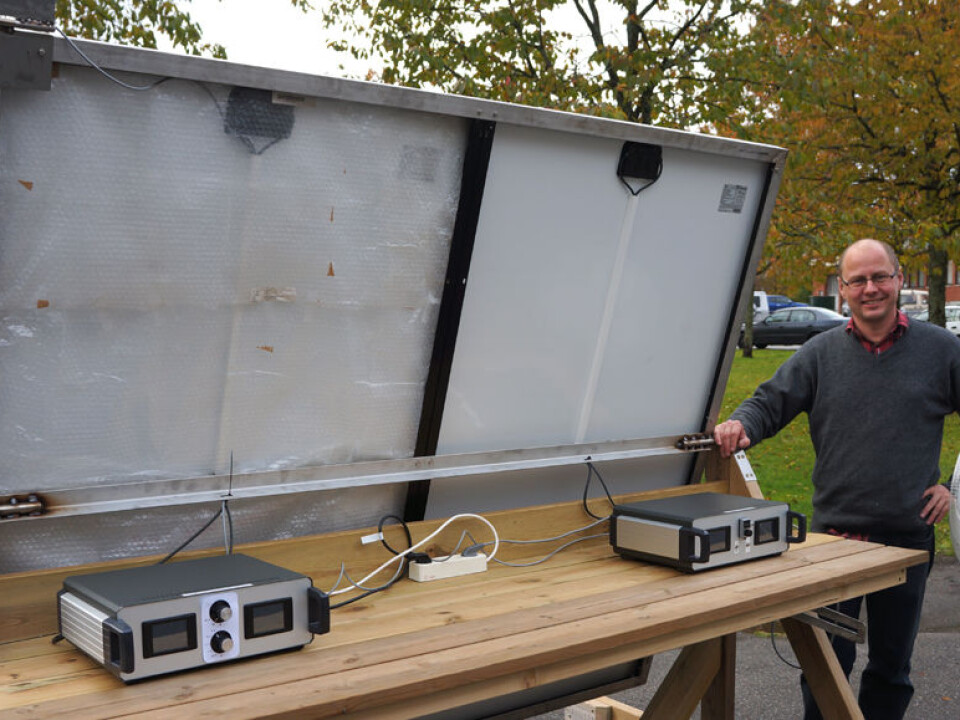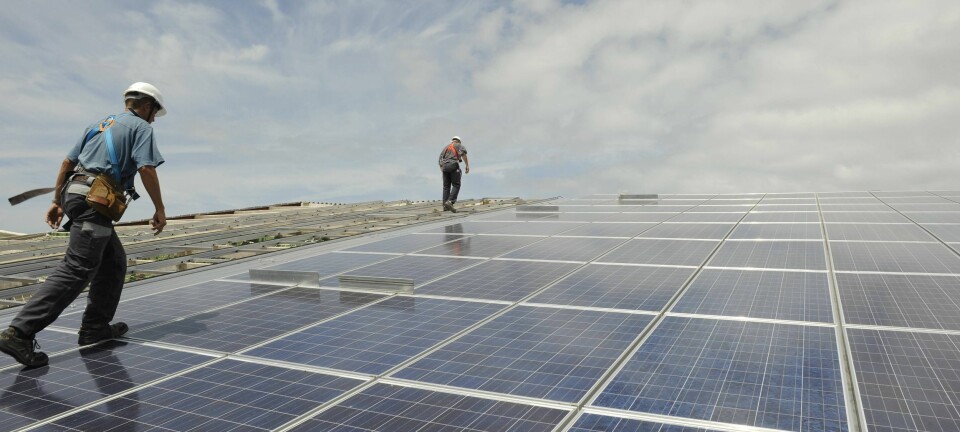
Bright future for solar energy in the north
Many Nordic regions have potentials for exploiting solar energy matching that of the solar giant Germany.
Denne artikkelen er over ti år gammel og kan inneholde utdatert informasjon.
“We’ve heard earfuls about how Norway isn’t suited for solar energy. That isn’t necessarily true,” says Espen Olsen, associate professor at the Norwegian University of Life Science (UMB).
“Large regions of the Nordic countries are really quite suitable for solar energy. It’s old news for us. It’s in the textbooks, but it isn’t well enough known outside our profession,” he asserts.
What might sound surprising is that this message was recently relayed by the Northern Research Institute (NORUT) in Norway’s High North. High latitudes don’t seem to be a handicap.
In 2010 NORUT published a scientific paper predicting a bright future for solar energy in the Nordic countries. Simulations showed that certain sunny Nordic regions could produce about as much energy as fair-weathered Freiburg in the south of Germany.
Germany leads, Nordic countries lag far behind

Germany is the world’s superpower when it comes to solar energy, thanks to generous government subsidies. In 2011 the sun delivered around three percent of the country’s total consumption.
One beautiful Saturday in May this year about half of Germany’s electricity consumption came from solar panels and solar energy parks.
To date, such figures lie below the horizon up here in the north. Sweden has made the longest strides but its solar energy production is minimal by comparison, only about 0.06 percent of Germany’s output.
About two thirds of the Swedish contribution is wired to the national power grid. The rest consists of solar panels on cabin roofs, caravans and the like.

Still, Sweden has doubled its production in recent years. This followed a two-tiered government subsidy regime which included issuing green certificates.
With half the population of Sweden, Norway produces a little over half as much solar power as its neighbor, but little is being done to increase output. The country has plenty of clean hydroelectric power and the impact of joint green certificates hasn’t been overwhelming.
Only about 1.5 percent of the solar panels in Norway are connected to the power grid.
More than expected
But changes are in the air. NORUT has moved on from simulations to real tests. Testing facilities started up early in 2012 in Piteå.

PiteEnergi has built and operates the facilities, partly with government funding. The solar cells are delivering results to NORUT’s researchers, and electricity to PiteEnergi’s headquarters.
In March some of its facilities managed to exceed expected output according to solar radiation standards.
Daniel Fåhraeus of PiteEnergi reports this was probably due to reflection from the snow.
Preliminary research results from NORUT show the Piteå facilities have indeed put out even more energy than simulations indicated. Its production was high, even when compared to standards further south in Europe.
Sunny Piteå
The test site wasn’t chosen by throwing darts at a map. Piteå is in the north of the Gulf of Bothnia, one of the sunniest regions in Sweden.
Total annual hours of sunshine are actually higher in Piteå than in central Germany, where skies are cloudier.
In the north the blue skies and long summer days more than make up for the dark winters.
Special boon and bane
But if you want to exploit such summer sun in high latitudes you need to deal with extra challenges.
First: You cannot place the solar panels in a fixed position on the ground. The further north you are, the wider the arc of the sun across the summer sky, from northeast, via the south, to the northwest.
Solar panels must rotate as well as tip to face the sun at a 90° angle like huge, mechanised sunflowers. Sun-tracking solar panels are what enabled the record output in Piteå last March.
Second: A sun-tracking solar panel needs to be a certain size to be cost-effective and requires the best and most costly silicon cells.
Third: Glare from the snow gives an extra bonus once it’s on the ground. But falling snow lands on solar panels as well, blocking the sun and it can also clog and ice up the machinery that rotates and tilts the panels.
Cold weather improves effect
But northern latitudes have another advantage. It’s chillier here.
The solar panel that Espen Olsen demonstrates at UMB in Ås, a little south of Oslo, is divided into two sections. One side is cooled down with a fan. The other is covered in plastic and gets warmer.
“Wind is important for cooling the solar panels. The colder the wind, the more chill,” says Olsen.
Less chaos
“Heat means the atoms in substances are vibrating. These chaotic vibrations subside as temperature sinks,” explains Trygve Mongstad.
He’s a researcher at the solar energy division of the Institute for Energy Technology (IFE) at Kjeller.
“Simply put, colder substances are more ideal, closer to perfect. The electrons are less agitated and transport more of their electrical energy out of the solar cell,” explains Mongstad.
Profitability
This isn’t an overwhelming effect. When the temperature drops by 20°C, energy production rises by about 10 percent.
But marginal improvements add up on the bottom line of solar energy financial statements.
The tests at Piteå show the upshot is sufficient. Facilities with sun-tracking solar panels at Piteå generate cheaper energy than a fixed rig in Germany.
North of the Polar Circle
What about Norway? Doesn’t the country have too many low pressure fronts moving in from all directions and clouding the skies? Astoundingly, the simulations at NORUT show there is a potential, even in cloudier regions.
A sun-tracking rig in the coastal city Narvik, north of the Polar Circle, gets nearly as much sun as a fixed one in the south of Germany.
And if you move further inland the outlook for solar energy is better.
Take for instance the solar cell park Glava Energy Center in Arvika, Sweden. “This solar cell park gets great results, almost commensurate to the average in Germany. These equate to the results reported in tests from NORUT in Piteå,” says Mongstad.
Useful solar studies
“Here at UMB we have Europe’s longest log of solar data. It goes all the way back to 1949,” says Espen Olsen.
In those days weather data was meticulously noted for agricultural purposes.
“We still register solar radiation at various latitudes, together with the Norwegian Meteorological Institute. And we have a lot of sun here. Norway is well-suited for development of solar energy,” concludes Olsen.
---------------------------
Read the Norwegian version of this article at forskning.no
































